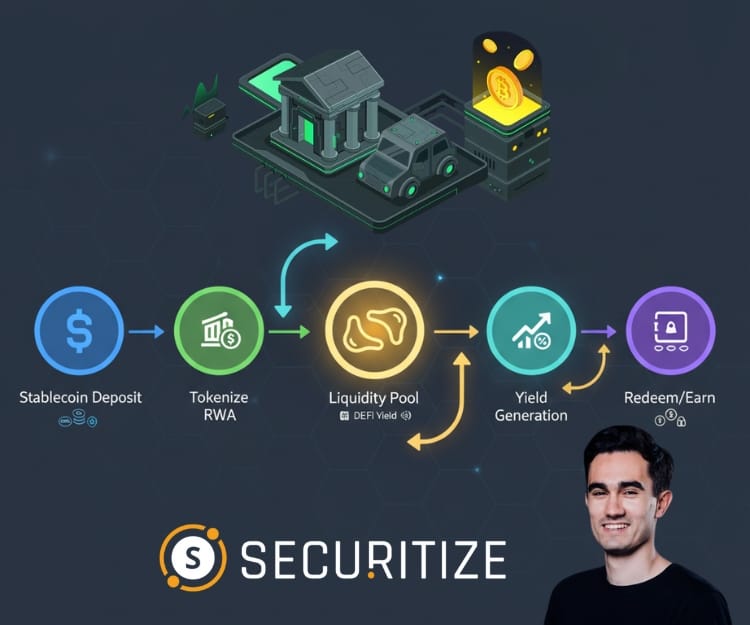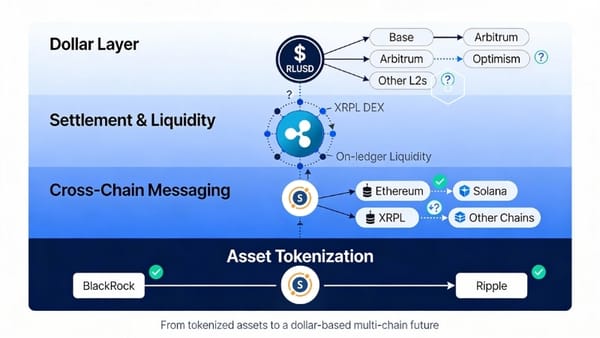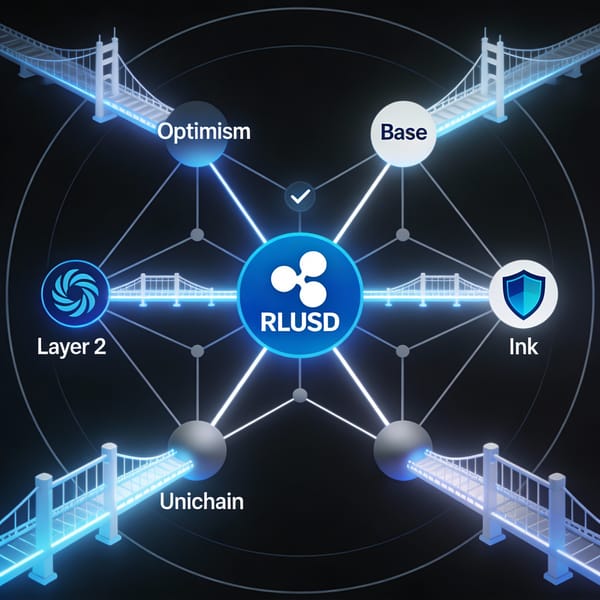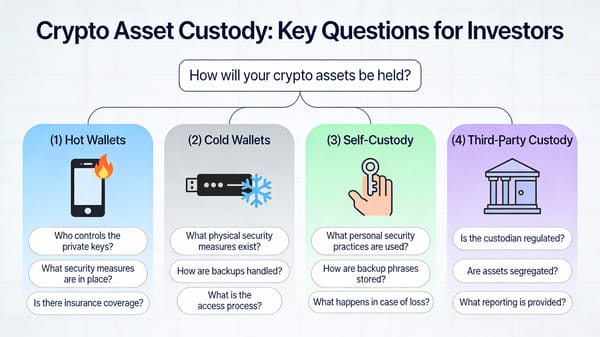The Missing Protocol Blocking Trillions in RWA Capital from DeFi: Securitize Executive Proposes a Solution
Securitize's Head of Ecosystem identifies extended redemption periods as DeFi's biggest RWA adoption barrier—and proposes a liquidity protocol solution. Could this unlock trillions in tokenized assets? Plus: implications for XRP and Ripple's infrastructure play.

Graham Ferguson, Head of Ecosystem at Securitize and former Northwestern University executive, has identified a critical bottleneck threatening real-world asset (RWA) adoption in decentralized finance—and he's calling on builders to solve it.
In a recent post on X, Ferguson pinpointed extended redemption periods for private assets as "the biggest blocker of RWA adoption in DeFi." Unlike the instant liquidity DeFi users expect, traditional private assets can require weeks or months to redeem, creating friction that limits institutional participation in tokenized markets.
Since joining @Securitize, it's clear that the biggest blocker of RWA adoption in DeFi is that redemption periods (for private assets) are far longer than what we are accustomed to in DeFi.
— Graham Ferguson (@grahamfergs) October 21, 2025
However, this blocker poses a product idea. A protocol that:
1) accepts stables for…
The Problem with RWA Redemptions
Real-world assets—including tokenized securities, real estate, commodities, and private credit—represent one of crypto's most promising growth sectors. Industry estimates suggest the RWA market could reach $16 trillion by 2030, according to recent projections from Boston Consulting Group and other financial institutions. Yet this potential remains largely untapped due to structural inefficiencies inherited from traditional finance.
When investors tokenize private assets like venture capital funds, private equity, or commercial real estate, they don't magically gain instant liquidity. These assets maintain their underlying characteristics, including lengthy redemption windows that can extend 30, 60, or even 90+ days. For DeFi natives accustomed to swapping assets in seconds, this wait time is unacceptable—and it's stalling institutional capital flows into the space.
Ferguson's experience at Securitize, a leading platform for tokenizing securities with over $1 billion in assets under management, gives him direct insight into this friction point. The company has facilitated token offerings for major firms including KKR and has partnered with BlackRock on the BUIDL fund, making Ferguson's observations particularly relevant to institutional adoption trends.
A Protocol Solution for Illiquid Assets
Ferguson outlined a potential protocol design to bridge this liquidity gap:
- Stablecoin deposit mechanism – Users deposit USDC, USDT, or other stablecoins into a liquidity pool
- RWA backstop functionality – The protocol provides immediate liquidity for illiquid tokenized assets
- Premium liquidation fees – High fees compensate liquidity providers for taking on redemption risk
- Depositor incentives – Yield generation and rewards encourage stablecoin deposits
- Additional yield strategies – Optional yield optimization and looping to create a comprehensive RWA yield platform
This design essentially creates a market-making layer between DeFi's instant liquidity expectations and traditional finance's settlement timelines. Liquidity providers would earn premium returns by accepting longer lock-up periods, while RWA holders gain faster exit options—similar to how market makers in traditional finance provide liquidity for illiquid bonds or OTC securities.
XRP and Ripple: Positioned for RWA Infrastructure
This development holds particular significance for XRP and Ripple's strategic positioning in the tokenized asset space. Ripple has increasingly focused on RWA infrastructure, with CEO Brad Garlinghouse publicly emphasizing tokenization as a core growth vertical.
Impact on Ripple's Business Operations: Ripple's payment infrastructure and XRP Ledger capabilities could serve as ideal settlement layers for RWA liquidity protocols. The network's low transaction costs (fractions of a cent) and fast settlement times (3-5 seconds) address key pain points Ferguson identified. If protocols like the one Ferguson envisions gain traction, Ripple could position XRPL as the preferred infrastructure for RWA secondary markets.
Partnership and Adoption Opportunities: With Ripple's ongoing partnerships with financial institutions globally—including recent collaborations with central banks on CBDC projects—the company could integrate RWA liquidity solutions into existing banking relationships. This bridges traditional finance and DeFi in precisely the manner institutional clients require.
XRP Price Potential: Increased RWA activity on XRP Ledger could drive token demand through several mechanisms: bridge currency utility for cross-border RWA settlements, potential use as collateral in liquidity protocols, and validator incentives as network activity increases. However, price impact depends heavily on actual protocol adoption and integration specifics.
Legal and Regulatory Standing: Following the partial legal victory against the SEC in 2023, where Judge Analisa Torres ruled that XRP sales on exchanges were not securities, Ripple has greater clarity for institutional partnerships. RWA tokenization falls squarely within regulated securities frameworks—territory where Ripple's improved legal position provides competitive advantages over projects with ambiguous regulatory status.
Market Implications and Builder Opportunity
Ferguson's call for builders represents a significant opportunity in an underserved niche. Current DeFi protocols primarily optimize for already-liquid assets, leaving the RWA liquidity problem unsolved. Projects that successfully address this gap could capture substantial market share as institutions tokenize trillions in traditional assets.
Several protocols have attempted adjacent solutions—Ondo Finance and Maple Finance offer tokenized treasury and credit products, while Centrifuge enables on-chain financing for real-world assets. However, none have specifically tackled the liquidity backstop mechanism Ferguson proposes.
The high fees Ferguson mentions would need careful calibration—too high and RWA holders won't use the protocol; too low and liquidity providers won't accept the redemption risk. Successfully threading this needle could create a sustainable business model in the expanding tokenization sector.
As traditional finance increasingly explores blockchain rails for asset issuance, solving the redemption period bottleneck may prove essential for mainstream RWA adoption. Ferguson's open call for builders suggests Securitize isn't building this solution internally—creating a white-space opportunity for entrepreneurial teams ready to tackle institutional DeFi infrastructure.
DISCLAIMER: This newsletter is for informational purposes only and does not constitute investment advice, advertising, or a recommendation to buy, sell, or hold any securities. This content is not sponsored by or affiliated with any of the mentioned entities. Investments in cryptocurrencies or other financial assets carry significant risks, including the potential for total loss, extreme volatility, and regulatory uncertainty. Past performance is not indicative of future results. Always consult a qualified financial professional and conduct thorough research before making any investment decisions.
Sources
- Graham Ferguson X Post
- Securitize Official Website
- BlackRock BUIDL Fund Announcement
- XRP Ledger Documentation
- Ripple vs SEC Court Decision Coverage
- Ondo Finance
- Maple Finance
- Centrifuge



